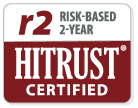In the final of our three-part blog series focused on how providers can optimize value-based care initiatives on the heels of the pandemic, our Chief Medical Officer — Dr. Matt Lambert — shares important insights on how best to approach technology-based decisions specific to value-based care (VBC).
Prior to this, Dr. Lambert offered guidance on how providers can best reduce physician administrative burden in the pursuit of value-based care and ensure data integrity in the transition to value-based care. In this latest blog, he expounds upon how providers should be approaching technology analysis and investment to support risk-based contracting.
Understand the sentiments that surround health+tech
When it comes to technology and healthcare, opportunities abound. Nonetheless, based on prior government incentive programs aimed at driving swift adoption of digital health records, there remains much frustration and trepidation when it comes to viewing technology as a panacea for all that ails healthcare.
What we’ve learned about technology in healthcare is that smart investments that focus on streamlining workflow at the point of care tend to be a win-win for both clinical and business leaders. This same insight will go far for providers as they consider which technology investments can help them the most in the transition to value-based care.
According to Dr. Lambert, a practicing physician, technology can actually do more harm than good at times for healthcare providers, especially when it comes to technology that promises but then underdelivers in helping providers expedite the move away from fee-for-service (FFS). Dr. Lambert firmly believes that technology is not the complete answer for providers as they deal with the difficult transition to taking on more risk — but it is a crucial part of the equation.
Does my electronic health record support APIs?
Today, no electronic health record (EHR) can be considered as a tool for VBC. EHRs were built at a time when fee-for-service ruled, so it makes sense that today’s EHRs were not designed to stand alone as the providers’ backbone for VBC.
Still, a provider’s EHR is a crucial part of the VBC tech stack. The most important thing to ensure is that your EHR fully supports APIs. Without this key data sharing function, Dr. Lambert cautions that transitioning to VBC will be a massive haul. As a starting point, providers should assess if they have the right EHR in place — and an EHR specifically with API integration capabilities and strong customer support as well.
What other core tools should providers prioritize in their VBC tech stack?
In addition to an EHR with API capabilities, Dr. Lambert also recommends that providers consider the following areas for technology investment to support VBC:
• Clinician workflow support that offers the right patient data at the point of care in order to optimize patient outcomes, while also fully capturing the patient details that ensure appropriate reimbursement based on the population of patients you serve;
• Payer communications tools that allow providers to better communicate and share data in real time with their partners in VBC; and
• Telehealth infrastructure capabilities that ensure your clinicians can provide patient care anytime, anywhere so that each and every visit — whether in-person or virtual — is reimbursable.
When assessing these core VBC tools, providers should also take the following into consideration: how easily/well will this technology integrate with the current infrastructure in place; what impact will this technology have on the clinicians’ and care teams’ workflow; and will this technology provide the right information on the right patient at the right time?
Should providers be wary of solutions over-indexing on NLP, AI, and machine learning?
Lastly, while emerging technologies leveraging AI, NLP, and machine learning are worth considering, the reality is that many of these solutions simply aren’t ready for prime time. With that in mind, Dr. Lambert stresses that providers should be wary of any provider that is promising a “pure” NLP, AI, or machine learning technology. These solutions, as they stand today, may actually add time and work for your care team because of the need for human review of what the technology is producing.
Dr. Lambert strongly believes that technology — while a key consideration — means nothing without the right team and processes in place to support the move from FFS to VBC. Without the right team and processes in place, Dr. Lambert stresses that providers will be ill-equipped to appropriately analyze and address technology gaps specific to VBC initiatives.

